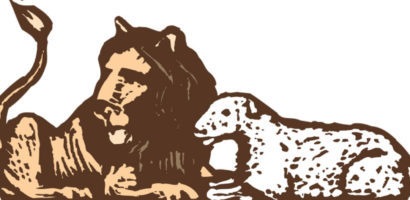JACOB “SAT” IN THE LAND
The last part of the book of Genesis—Joseph’s saga—begins in our new Torah Portion. It opens with the word Vayeshev (hence the name of the Portion), usually translated as “settled”, or “dwelt”: “Now Jacob dwelt in the land where his father was a stranger, in the land of Canaan.”[1] The contrast between Jacob and “his father” here is striking, especially in Hebrew: Jacob is settled in the Land where his father (grandfather, actually) was just a stranger. The word יָשַב (yashav) is connected through its root with other words for “seating” and means something sedentary, permanent, stable. “To dwell” here is understood as opposite to “a place of residence”. Jacob belongs to this Land!
And then, in the second verse, we read about the “line of Jacob”. For a moment, it seems very logical: with Isaac dead, Jacob has to become the leading figure of the narrative, right? However, Jacob immediately fades into background, and the verse “this is the line of Jacob”, actually, opens the story of Joseph. Why?
This beginning – ele toledot – occurs many times in Torah (11 times in the book of Genesis only). But there are cases when it is obvious that it serves as a literary bridge connecting two parts of the same story. For instance, for the very first time, we find it in Genesis 2:4, where it opens the second account of creation “This is the history of the heavens and the earth…”. Here it forms a literary bridge, connecting and holding together two creation stories. In the same way, the line from our Portion forms a literary bridge as well: it concludes the core of Jacob’s story and provides an introduction to Joseph’s saga.
By the way, in the light of this we can understand that the opening words of the New Testament—“The book of the genealogy (of Jesus Christ)”[2]—were also meant to be understood as a bridge connecting and holding together two very important parts of Scripture: the Hebrew Bible and the New Testament. They relate to each other in the same way as the two creation stories relate: we can’t read just the second part without the first, can we?
WHAT DID JOSEPH WEAR?
And then in Genesis 37:3 we read that Israel loved Joseph more than all his sons, and openly expressed his favoritism by giving Joseph a very special tunic. In Hebrew, this tunic is called כְּתֹנֶת פַּסִּים (ketonet passim). The traditional idea of translations and folklore is that this was some sort of multi-colored outer garment. However, Hebrew allows different understandings of these words. Indeed, the word passim here can be translated as “colorful”, “embroidered”, or “striped” – but it can also denote a long garment, coming down to the “palms” of the hands and the feet, or the material out of which the coat was made (fine wool or silk). Hence, ketonet passim may be translated as “a full-sleeved robe,” “a coat of many colors,” “a coat reaching to his feet,” “an ornamented tunic,” “a silk robe” or “fine woolen cloak.”
Remarkably, in the entire Tanach (Old Testament), the very same words occur only once more – in the story of Amnon and Tamar. There this robe definitely signifies special distinction: the king’s virgin daughters wore such apparel.[3] It seems that this robe is always mentioned in the Scriptures as a harbinger of the coming tragedy: both stories are tragic. Joseph was sold, Tamar was raped; the brothers stripped Joseph of his tunic, Tamar tore her tunic.
This is just one example of how important the understanding of the Hebrew Scriptures is. From the translations, we can’t see that Tamar’s clothes were the same as Joseph’s – however, it is only thanks to this verse that we can understand that Joseph’s tunic was very special, indeed: not just a tunic of many colors, but most likely the kind of robe worn by royalty.
JUDAH AND TAMAR: THE OVERLOOKED STORY
The dramatic chapter 37 of Genesis, where Joseph is sold by his brothers, is immediately followed by chapter 38—the story of Judah and Tamar. At first glance, the position of this story in the text seems rather strange and random: this story breaks the flow of Joseph’s saga and seems to be in no way connected to the sale of Joseph. When I teach this lesson (as part of DHB course), I always ask my students in the beginning: Why do you think the story of Judah is here? Why does it interrupt Joseph’s narrative? So far, nobody has been ready to explain it. So, what do we miss?
This story is seen in a completely different light when read in Hebrew. For instance, at the end of the story when Tamar brings out Judah’s personal items, she says: Discern, I pray thee – הַכֶּר־נָ֔א. This expression, הַכֶּר־נָ֔א – discern, recognize, appears only twice in the entire Torah, and can you guess where it is first used? Right in the previous chapter, when the brothers bring Joseph’s coat to Jacob and say: discern please whether it be thy son’s coat. It was probably Judah himself who said these words, since he evidently was a leader among the brothers—and now the deceiver himself was deceived!
It seems that when Judah heard these words his heart was pierced by the recognition: by the recognition of his own words, by the recognition of his own things that Tamar brought out, and by the recognition of his own sin that came back to him in these words. He confessed and repented – becoming the very first person in the Torah to admit his sin and repent. Thus, the story of Judah and Tamar is the story of Judah’s change of heart – but it can only be fully understood as such in Hebrew, or at least, with Hebrew.
Even the name of Judah speaks of repentance. Many people know that the verb lehodot (להודות) means “to thank “ or “to praise” – and the name Judah (יהודה) comes from the same root. However, the verb lehodot has yet another meaning: to admit, to confess. For example, we read a special prayer of confession for Yom Kippur, and its name, Vidui, comes from the same root. This provides an important insight into the character of Judah: in both stories, with Joseph and with Tamar, Judah admits his sin and experiences a change of heart. This also provides an important insight into the character of God: clearly, repentance is so very important to Him, that He establishes the kingly line of Israel from the tribe of Judah.
If you like the articles on this blog, you might enjoy also my books, you can get them from my page: https://blog.israelbiblicalstudies.com/julia-blum/ . Also, I wanted to let you know that I am preparing the book with all these Hebrew insights into Torah, the book will be published and available in January -2019.
The insights you read on these pages, are typical of what we share with our students during DHB (Discovering the Hebrew Bible) or WTP (Weekly Torah Portion) classes. If these articles whet your appetite for discovering the hidden treasures of the Hebrew Bible, or studying in depth Parashat Shavua, along with New Testament insights, click on this link to get more information (and also a teacher’s discount for new students) regarding eTeacher courses:
https://israelbiblicalstudies.com/bible-jewish-studies/?AffiliateWizID=3918&SubAffiliateID=
1] Gen.37:1
[2] Mat.1:1
[3] 2 Sam. 13:8









Thank you, Julia , for the insights, that help me to know more and more deeply the God´s heart.
Thank you Emunah (what a beautiful name)! Blessings!
Amazing insight !
Thank you Julia.
Sam
from Canada
Thank you Samuel! So glad you find it interesting!
Shalom Julia, Thank you for these blogs on the Torah portions. I have been saving them & I look forward to your book being published. Paul.
Thank you Paul. I am so glad you find these insights interesting! Some of them I did share in the class, didn’t I? But the book will contain many more additional insights, not only those that I share here or in class.